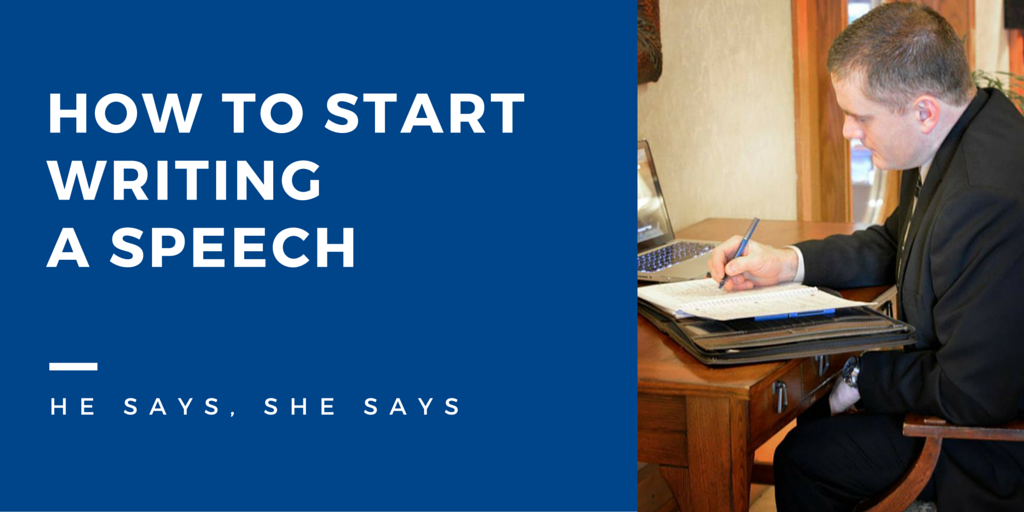
How to Start Writing a Speech
So, you have to give a speech or presentation. Most people will have to give one at some point.
Just the thought of that can bring on serious bouts of anxiety for most people.
What will I say?
Do I need Power Point slides?
Will I stay within my time limit?
How do I even begin?
Those are all great questions. We'll deal with the others in later articles, but in this article we'll stick with how to start. Starting properly will reduce the amount of anxiety involved and get the speech headed in the right direction right off the bat.
When I need to write a speech, I start with a topic sentence. The first thing I do is write out one sentence that very clearly states my topic. It might include what I want the audience to learn through my speech. For example, a topic sentence I wrote for a recent speech was, "You can trust God with your children." Obviously, my talk was written for a church setting. Your audience may be different, but the point is to write your topic sentence first. Once it is written you will be able to weed out ideas later if they do not support your topic.
Next comes the brainstorming process. I call it a "brain dump." For this brain dump, I write out my topic sentence in big letters across the top of a sheet of paper. Then I set a timer for 20 minutes and write down all the ideas, stories, and facts I can think of that will support my topic sentence. I write down everything that pops into my mind for the full 20 minutes. The ideas don't necessarily need to be clear or worded properly at this point. The goal is simply to write down every idea or fact that I might possibly want to include in my speech. This brain dump may need to be repeated 3-5 times over the course of a few days in order to get all the ideas onto paper.
Then I look over all the ideas from my brain dumps. Any idea, story, or fact that does not relate to my topic sentence gets the ax at this point. Those unnecessary items might be saved for a future or separate talk, but they are taken out of the current one. This is the time to weed out anything that will not support my topic sentence.
The remaining items then need to be organized into a workable order. This might mean that they need to be listed in chronological order or some other meaningful order. Usually I simply go back through the list and number them. Keep in mind that any of this can be changed later.
Once I have a rough idea where I am going with all of these ideas, I write my opening statement. This might be a paragraph or two. The opening should be strong and should let the audience know the topic or where the speech is going. I'm not saying that I state my topic sentence verbatim (that would probably be boring), but l do make sure the audience is told where we are headed.
After my opening statement is finished, I like to write my closing remarks. Again, this might be a paragraph or two. The closing should be strong and have a definitive end. No audience wants to listen to a speaker drone on and on or go off on tangents, so I keep my closing concise. I like to end with one memorable statement.
Once the opening and closing are written, it is time to outline all the ideas from my brain dumps. This outline becomes the "map" for my speech. It doesn't need to be too detailed at this point. Also, keep in mind that anything can be changed later on as the process progresses. I inevitably reword my opening and closing statements and also my outline as I work on my talk and practice it.
Visually, this is the outline I create to start working on a speech:
- Opening Statement
- Brain Dump detail #1
- Brain Dump detail #2
- Brain Dump detail #3
- **Continue with as many Brain Dump details as are appropriate for the speech and time limit**
- Closing Remarks and Statement
This brain dump and outlining process can work for a variety of speech or presentation types. Brain dumps and outlining are not the only part of the speech-creating process, but they are a great way to start.

